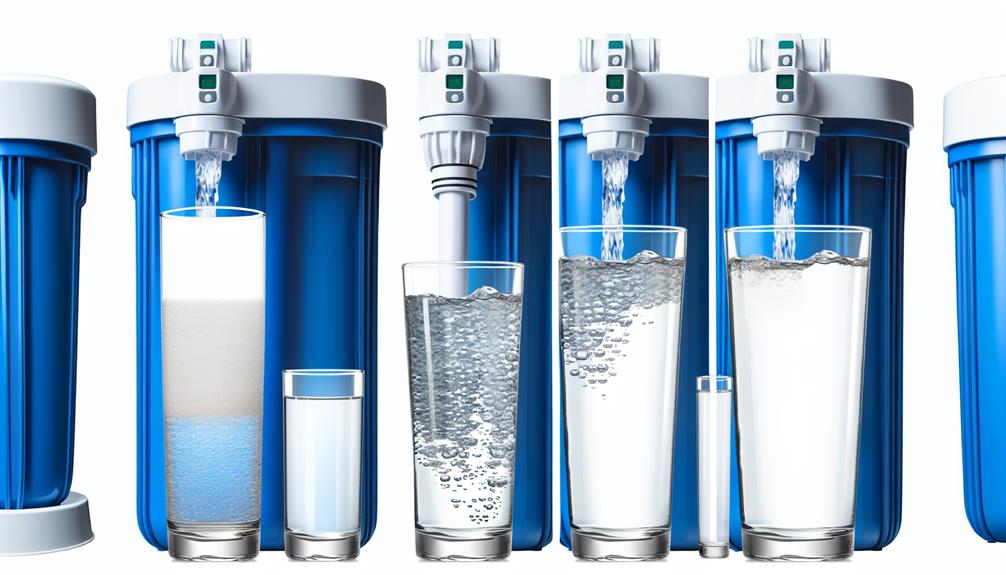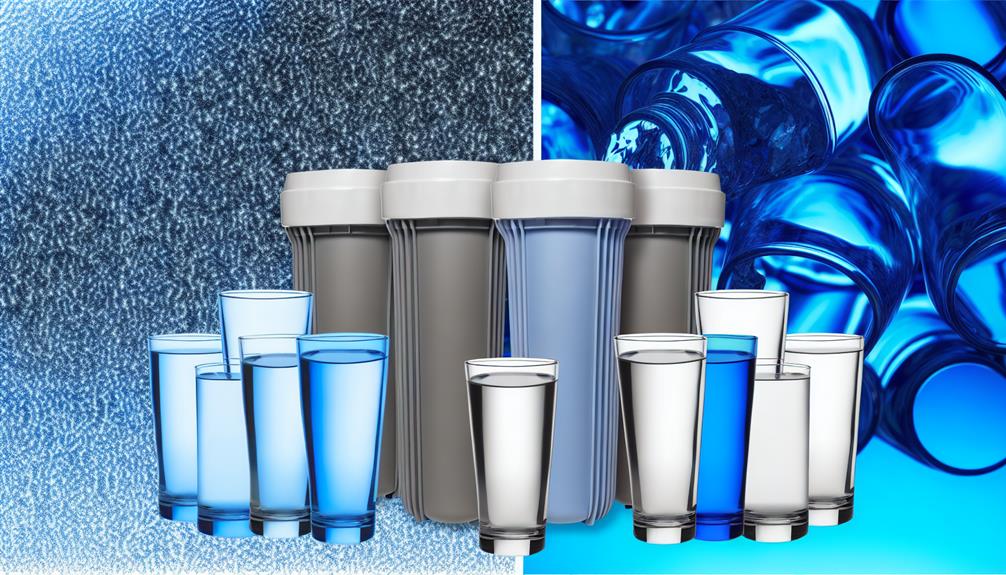Imagine the gentle gurgle of water cascading through a filtration system, promising a sip of purity in a world where concern over contaminants like lead is ever-present.
You're in pursuit of a water pitcher that not only guarantees a lead-free experience but also delivers on taste and practicality.
As you weigh your options, it's vital to consider the factors that differentiate one pitcher from another—from the efficacy of lead removal to the nuances of maintenance.
In this guide, we'll navigate the market's top contenders, examining the design elements that enhance functionality and the hidden costs that could influence your decision.
Let's uncover the pitcher that won't just sit idly on your countertop but will become a trusted ally in your daily hydration routine.
Assessing Lead Removal Efficiency
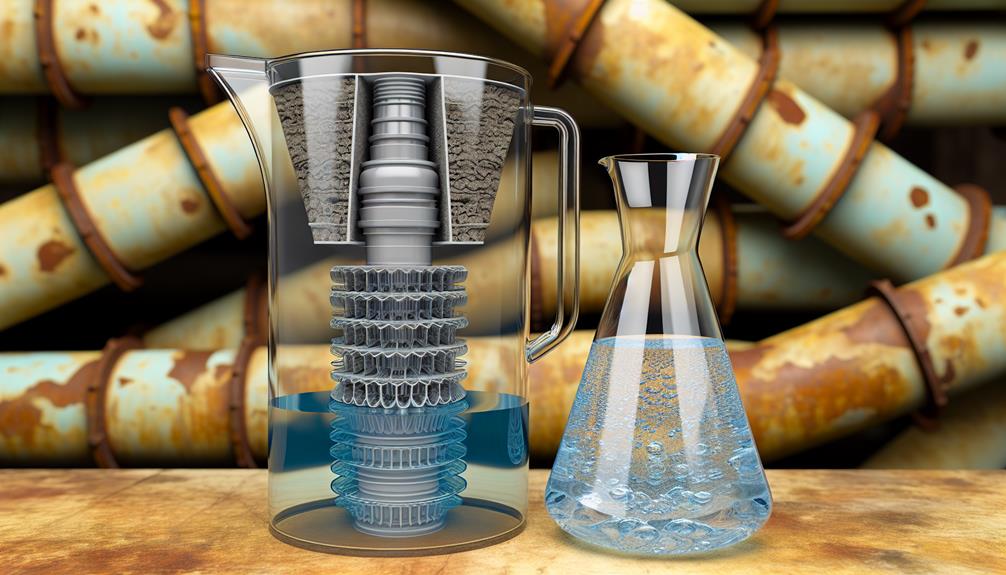
Evaluating the lead removal efficiency of water pitchers is critical, as it directly impacts the safety and quality of your drinking water. The health implications of consuming lead-contaminated water are well-documented, ranging from acute poisoning to long-term developmental issues. To safeguard public health, it's essential to scrutinize the performance of these pitchers against established testing standards.
You must understand that not all water pitchers are created equal. Manufacturers may claim their products are effective, but independent testing according to NSF/ANSI Standard 53 for drinking water treatment units is the benchmark for verifying lead reduction claims. This standard ensures that a product reduces lead to below the Environmental Protection Agency's (EPA) action level of 15 parts per billion (ppb).
When you're assessing a water pitcher, examine the specific data provided by these tests. Look for a reduction rate that not only meets but preferably exceeds the minimum requirements. This information, expressed as a percentage, reflects the pitcher's ability to filter out lead from your water supply.
Furthermore, consider the pitcher's capacity and the longevity of its filter. A higher-capacity pitcher with a long-lasting filter may offer better long-term protection, but it's the initial and consistent efficacy in lead removal that's paramount for your health.
Top-Rated Pitchers for Lead Filtration
Selecting a top-rated water pitcher for lead filtration means choosing one that not only meets, but often surpasses, the rigorous NSF/ANSI Standard 53 for lead reduction. Your health is paramount, and understanding the health impacts of lead-contaminated water is critical in making an informed decision.
To safeguard your wellbeing, here are four pitchers that excel in lead filtration:
- Aquagear Water Filter Pitcher: Boasts filter certification for over 89 contaminants and is known for its long-lasting filters. Its premium design ensures maximum reduction of lead content.
- Clearly Filtered Pitcher: With its affinity for purity, this pitcher removes up to 99.7% of lead, offering exceptional performance and peace of mind through its certified filtration technology.
- ZeroWater 10 Cup Pitcher**: Utilizes a 5-stage filter to target lead and other heavy metals. Its certification is a testament to its effectiveness in delivering clean water.
- PUR Ultimate Filtration Water Pitcher**: Features MAXION filter technology, blending carbon and ion exchange materials for superior lead removal.
Each pitcher presents a strategic approach to mitigate health risks associated with lead exposure. By focusing on the technical precision of filter certification, you're investing in a scientifically validated defense against potential health impacts.
Pitcher Design and Capacity Considerations
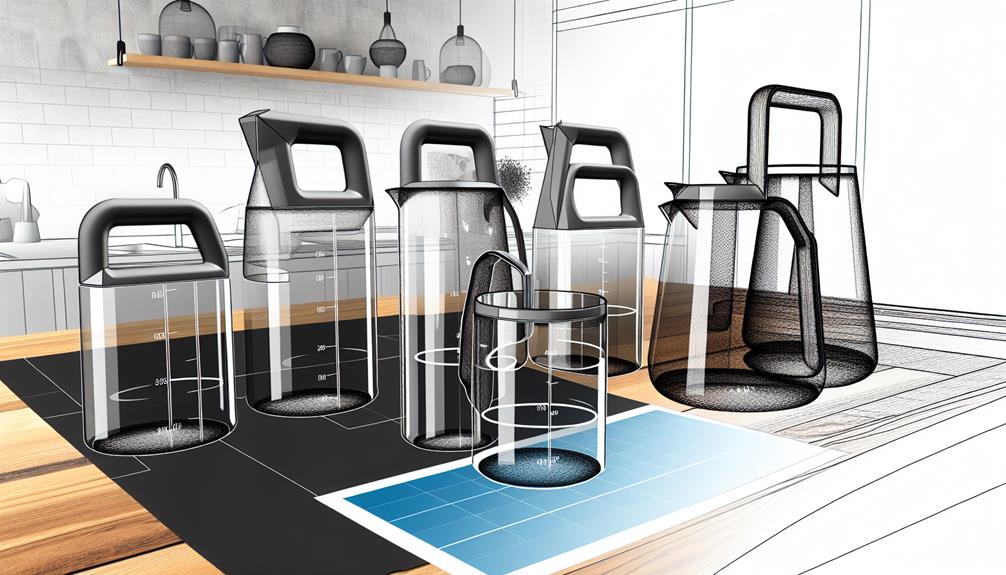
When considering a water pitcher's design and capacity, it's crucial to assess how these factors align with your daily water consumption and storage space to ensure both practicality and efficiency in lead removal. Material durability is a key aspect, as pitchers must withstand regular use and cleaning without compromising their lead-filtering capabilities. Seek out pitchers made from robust materials that resist cracking and discoloration while maintaining the integrity of the filtration system over time.
Ergonomic features also play a significant role in the user experience. A well-designed handle, for instance, ensures comfort and control when pouring, reducing the risk of spills and facilitating ease of use. The pitcher's spout should be designed to prevent drips, which can be both inconvenient and wasteful.
Capacity should be chosen based on your household's size and drinking habits. A larger pitcher may reduce the frequency of refills but consider whether it will fit comfortably in your refrigerator. Conversely, a smaller pitcher may suit a single user or a small household, offering the benefit of a smaller footprint for storage.
Balancing these elements will help you select a lead-cleansing water pitcher that's both efficient in contaminant removal and convenient for daily use.
Maintenance and Filter Longevity
Having considered the design and capacity of lead-cleansing water pitchers, it's equally important to understand the maintenance requirements and the longevity of their filters to ensure sustained performance. The efficacy of these pitchers heavily depends on the regular replacement and maintenance of filters, which are crucial for the removal of contaminants, including lead.
Here are key points to consider for maintenance and filter longevity:
- Filter Replacement Indicators: Most modern water pitchers are equipped with indicators that alert you when it's time to replace the filter. These indicators can be based on the time elapsed, the volume of water filtered, or even the actual filtration quality detected by electronic sensors.
- Cleaning Routines: To maintain optimal performance, establish regular cleaning routines for the pitcher itself. This prevents any buildup of residues or contaminants that can compromise water quality.
- Manufacturer's Instructions: Adhere strictly to the manufacturer's guidelines regarding filter lifespan. Using filters beyond their intended period can lead to inadequate lead removal and potential exposure to other contaminants.
- Storage and Handling: Proper storage and careful handling of both the pitcher and replacement filters are imperative to prevent accidental contamination or damage to the filtration system.
Cost and Value Comparison
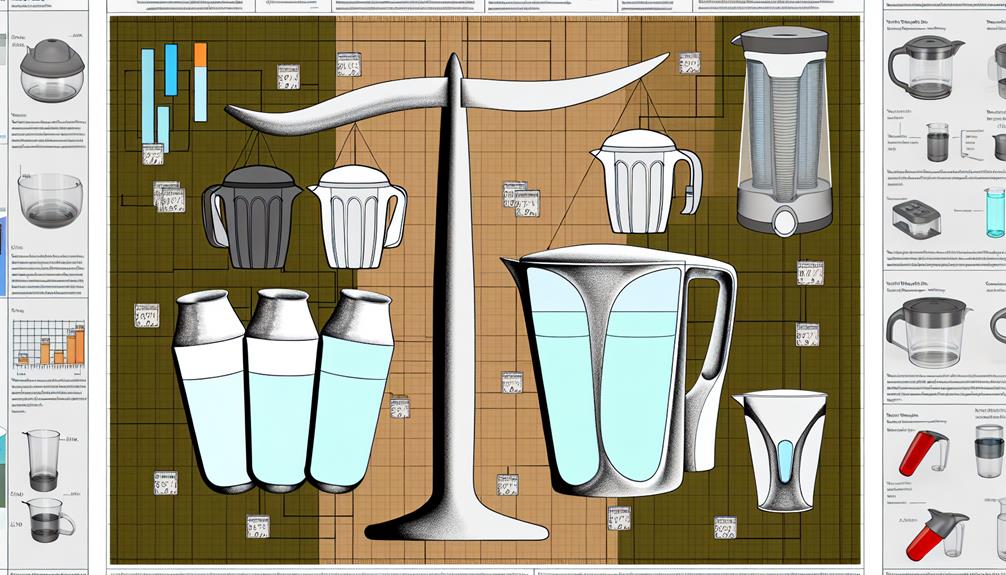
As you compare the costs and values of various lead-cleansing water pitchers, it's essential to analyze the initial purchase price alongside the ongoing expenses for filter replacements and potential savings from reduced bottled water consumption. Given the serious health impacts of lead exposure, including cognitive deficits and cardiovascular issues, investing in a reliable pitcher that effectively removes lead sources from your drinking water isn't only a financial decision but a health imperative.
The market offers a range of models with varying capacities and filter lifespans. High-end pitchers may feature multi-stage filters that address additional contaminants, but they often command a premium. Conversely, budget-friendly options mightn't provide the same breadth of filtration, potentially leaving traces of lead in your water. It's crucial to scrutinize the cost-per-gallon of filtered water, which includes the initial cost spread over the lifespan of the pitcher, plus the price of filters divided by the gallons they purify.
Conclusion
In conclusion, you've seen that not all pitchers are equal in tackling lead contamination. The top-rated options offer proven efficiency, marrying design with capacity to meet diverse needs.
Remember, maintenance and filter lifespan are crucial for sustained performance. When weighing cost against value, consider long-term savings from reliable filters.
Make an informed choice—your health depends on the analytical selection of a lead-cleansing pitcher that's scientifically validated for clean, safe drinking water.
